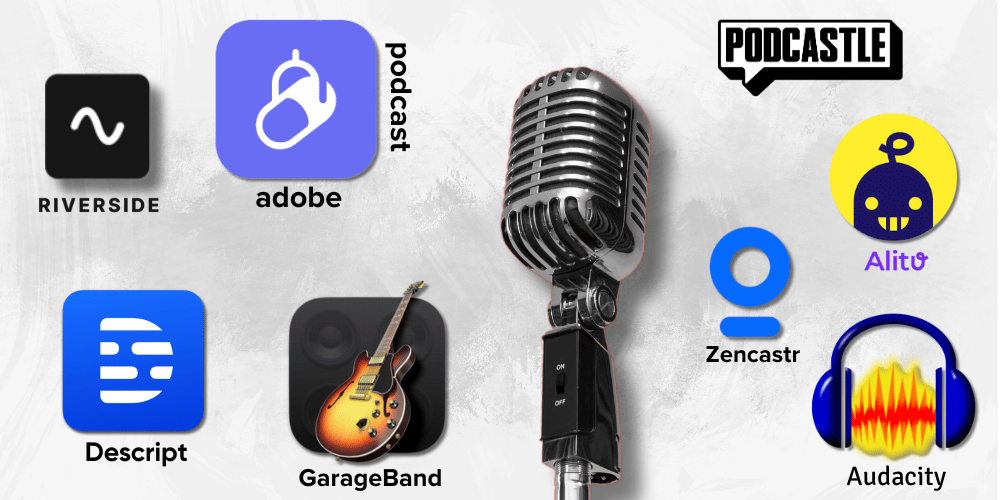The podcasting market reached 584 million global listeners in 2025, yet 32% of creators (nearly 1 in 3) still struggle with basic technical hurdles that delay their launch plans. But will tools like Adobe Podcast actually accelerate their efforts? Let’s find out.
After analyzing 800+ user reviews across Reddit, Trustpilot, G2 and podcasting forums over the past six months, what I found was surprising: marketing promises seamless workflows, but users report wildly different experiences based on their needs and technical backgrounds.
Need help choosing the right tool for your specific needs? Try our free podcast software finder to get personalized recommendations based on your experience level, content format, and budget.
PODCAST SOFTWARE
TOOLS INFOGRAPHIC
– 2025 –
Adobe Podcast
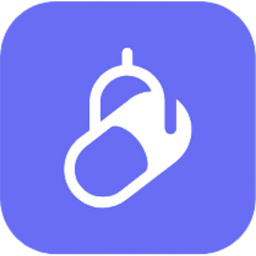
Solo content
Challenging environment
AI audio enhancement
Noise removal
Transcript editing
Descript
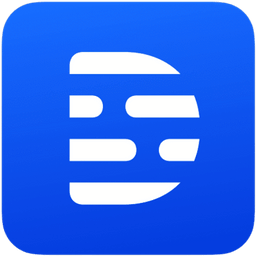
Content creators
Transcript workflows
Text-based editing
Quality sound
Overdub
Riverside

Remote interviews
Quality recording
Local recording
Mobile app
4k Video
Audacity
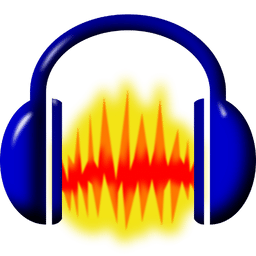
Budget-conscious
Technical users
Numerous tutorials
Powerful editing control
Extensive plugins
Alitu

Hands-off production
Non-technical users
End-to-end automation
Template-based workflow
Publishing integration
GarageBand
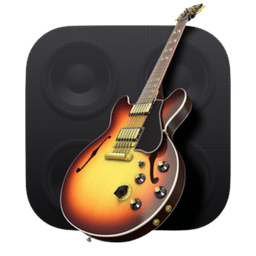
Mac users
Music integration
Drag-and-drop simplicity
Royalty-free music library
Apple integration
Zencastr

Remote interviews
AI-assisted editing
Social media clips
One-click distribution
(Instability issues)
Podcastle
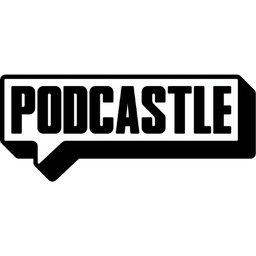
Audio & video creation
Browser-based editing
Sound editing
AI-powered editing
(Unexpected charges)
Which podcast tool is perfect for YOU?
Take our 2-minute quiz for personalized suggestions tailored to your specific needs
Prefer a printer-friendly version? Check out our podcast tools infographic image page for easy sharing and downloading.
Best Podcasting Software Tools: Complete 2025 Comparison
The modern podcasting toolkit has evolved far beyond simple audio recorders. Today’s creators juggle remote interviews, AI-powered editing, automatic transcription, and multi-platform distribution—all while maintaining professional audio quality. This complexity has created distinct categories of tools, each targeting different creator needs and technical comfort levels.
Our user research reveals a critical insight: no single platform excels at everything. The “best” choice depends entirely on your primary use case and technical comfort level.
Based on our analysis of user feedback, we’ve identified eight tools that consistently appear in creator discussions, each offering unique approaches to common podcasting challenges.
Adobe Podcast: The AI-Powered Audio Enhancer
Best For: Content creators recording in challenging environments who need reliable audio cleanup.
Adobe Podcast has positioned itself as the premier solution for creators wrestling with suboptimal recording conditions. Its flagship AI-powered speech enhancement technology generates excellent results, transforming amateur audio into broadcast-quality sound with minimal effort.
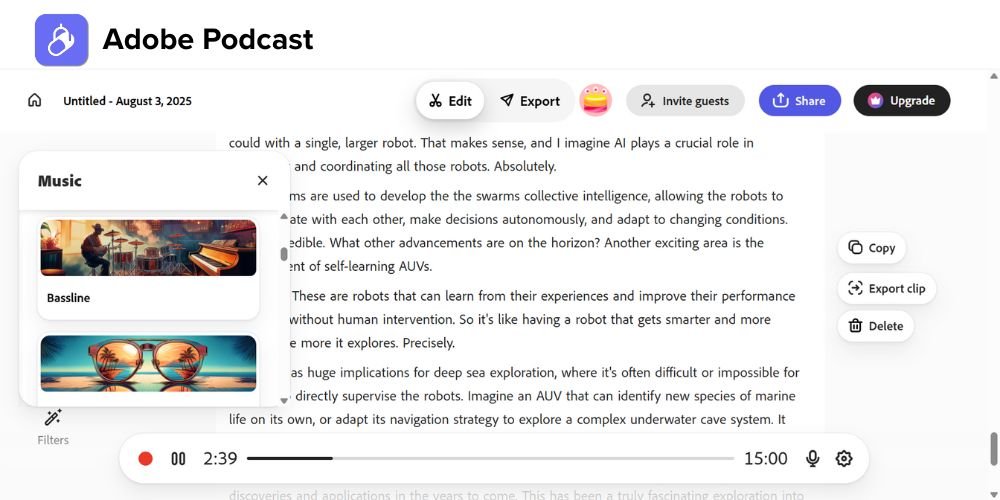
What Users Actually Say about Adobe Podcast
Here’s what creators actually think about the Enhance Speech feature: they love it. The transformations are pretty impressive, especially when you’re stuck with basic gear. One G2 reviewer explained: “Sometimes, while I am in different locations where I don’t have my professional accessories to record audio, I have to record with my average earphones. But the AI feature in Adobe Podcast steps in to the scene and does the job greatly by enhancing my poor/average quality audio to a good and decent one.”
The user-friendly interface scores high marks among beginners, with many appreciating the straightforward workflow. Reddit users specifically praise how the “speech feature is truly impressive” with “fantastic clarity” and a “remarkably straightforward” user experience.
Adobe Podcast Cons: Performance Issues and Limitations
But here’s where it gets tricky, user experiences aren’t universally positive. AI processing limitations emerge in real-world scenarios—particularly when the algorithm over-processes audio, leaving “robotic artifacts” as noted in our research. One Reddit user shared a telling example: “After I ran it through Adobe Podcast, the jokes no longer made any sense as he sounded pristine. Another had constant pops through the recording”.
Free tier restrictions also frustrate users, with limitations that push creators toward paid subscriptions faster than expected. On top of that, the tool’s performance suffers in low-bandwidth situations, creating reliability issues for creators without consistent internet access.
Adobe Podcast User Verdict
Adobe Podcast is best for creators who frequently record in challenging environments and need reliable AI-powered audio cleanup rather than a complete podcasting solution. Users recommend it for creators who frequently record in suboptimal conditions but warn against expecting it to solve fundamental recording issues. If you often find yourself recording in challenging environments, you can explore Adobe Podcast here.
Descript: Edit Audio Like a Text Document
Best For: Podcasters and content creators who prefer editing audio through text transcripts rather than waveforms.
Descript takes a completely different approach to audio editing. Here’s how it works: instead of wrestling with waveforms, you edit the transcript directly. It’s like treating your audio file as a text document where deleting a word from the transcript automatically removes it from the audio. The concept sounds almost too simple to work well, but it genuinely changes your entire workflow once you’re working with speech-based content like solo podcasts, interviews or panel discussions.
This innovative approach has won passionate advocates, though performance issues and interface quirks have frustrated others.
Descript Key Features and User Experience
Transcript-based editing stands out as Descript’s most praised feature for being a massive time-saver. The ability to delete filler words by simply removing them from a transcript has become a favorite feature among regular users. As one reviewer put it: “Deleting ‘ums’ in a transcript and watching the waveform update blew my mind.”
Studio Sound gets strong reviews for transforming amateur recordings. It’s designed as an accessible alternative to professional tools like iZotope RX, using AI to automatically clean up audio that would otherwise require technical expertise to fix. One user reports: “I recorded an episode from a hotel room with echo, distant AC noise, and paper-thin walls. Descript made it sound like I was in a proper booth.”
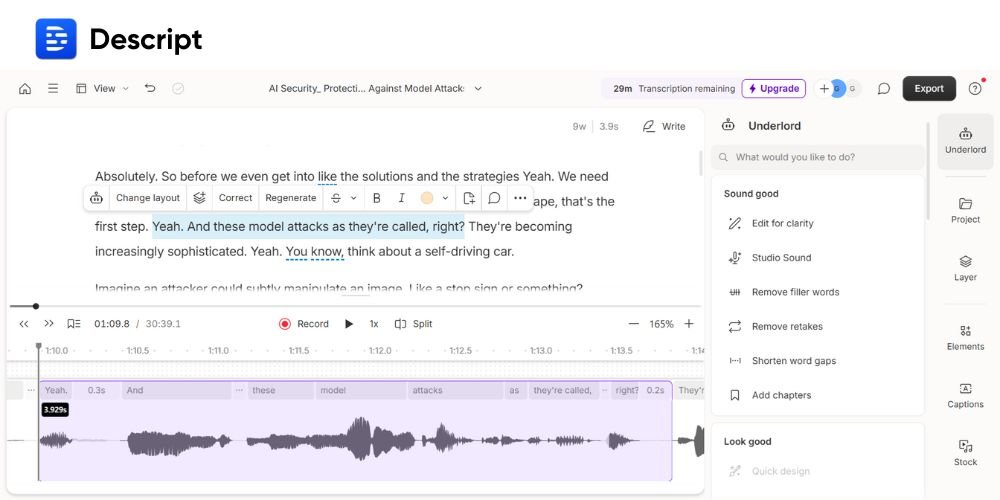
The Overdub feature initially strikes many as creepy marketing nonsense, but users have found genuine practical value. The ability to fix mistakes by typing corrections—and having a cloned voice seamlessly integrate the changes—has proven useful for creators who want to avoid re-recording entire segments. If these AI-powered editing capabilities sound useful for your workflow, you can explore Descript’s features here.
Descript Performance and Pricing Concerns
While Descript excels at its core transcript-based editing, performance can vary depending on how complex a project is. Larger projects can push Descript to its limits, especially on older machines. Users report that multi-track projects over 2 hours tend to slow down performance significantly, with some needing to break longer sessions into smaller chunks for smoother editing. For typical podcast editing and moderate video projects, most users find performance acceptable, but complex projects with multiple audio sources can strain system resources.
The pricing structure reflects Descript’s positioning as a comprehensive content creation platform. While some users note that “the monthly cost adds up”, many find value in the all-in-one approach that combines transcription, editing, and enhancement tools. The $30 Pro tier becomes necessary for longer shows, but this tier includes features that would cost significantly more if purchased separately from other providers.
Is Descript Hard to Learn? Interface and Learning Curve Review
Descript’s interface presents both challenges and rewards for new users. While some reviewers note initial hurdles – with one detailed review stating: “User Interface isn’t intuitive—It can be frustrating trying to figure out how to access basic features and complete simple tasks” – many users report that the learning curve is worth the payoff.
Descript User Verdict
Descript excels for creators who prefer text-based workflows and need efficient content repurposing. It’s particularly valuable for podcasters, interview-based content creators, and anyone who finds traditional timeline editing cumbersome. The platform’s transcript-driven approach delivers significant time savings for speech-heavy content, though it’s better suited for content creation than cinematic video production. Check out Descript here to see if its document-style editing approach suits your style.
While Descript has some performance quirks on larger projects, most users find these manageable given the workflow benefits. For creators willing to adapt to its document-style editing approach, Descript often becomes an indispensable part of their content creation toolkit.
Riverside: The Remote Recording Specialist
Best For: Interviews and multi-guest or panel shows requiring high-quality separate audio or video tracks.
Riverside has built its reputation on solving the biggest challenge of remote recording: maintaining professional audio quality despite internet connectivity issues.
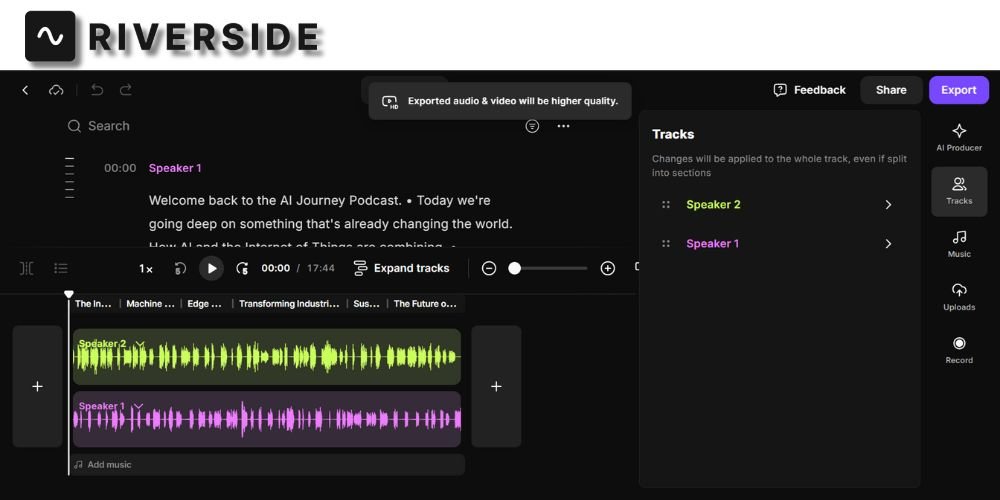
Riverside Local Recording Advantages
Users consistently praise Riverside’s local recording capability as its standout feature. Unlike cloud-based alternatives, the platform records locally on each participant’s device, ensuring high-quality files regardless of internet hiccups during the session. One Trustpilot reviewer noted: “Locally created files ensure full quality without broadband-related problems.”
The setup is very simple. Users appreciate the straightforward process of just sending a link to guests, with one user describing the typical experience: “I hit record, sent a link, and three HD tracks appeared—felt like magic.”
The results speak for themselves. Professional quality consistently impresses users, with many highlighting massive improvements over previous solutions. One long-term user shared: “I used to create clips in Headliner. No videos, just audio and whatever photos I could find. Riverside pulls video from the recording and makes amazing clips for me. Such a time saver!”
Riverside Technical Reliability Issues
However, connectivity issues remain a persistent challenge for users. Users report “upload stalls on weak networks” and “occasional app crashes on MacOS”. The Mac application, in particular, has suffered from some stability issues, with one user reporting it: “frozen and shut down part way into a live presentation”.
Support quality receives mixed reviews, with some users frustrated by responses that feel dismissive. One reviewer described the support as ‘not remotely helpful’ when dealing with technical issues.
Riverside Pricing and Feature Balance
While users appreciate the comprehensive feature set, over-quota fees can surprise budget-conscious creators. The additional charges for exceeding free hours ($15 per extra hour) can quickly add up, potentially doubling monthly costs for very prolific podcasters..
Riverside User Verdict
Riverside stands out as the top choice for creators prioritizing audio quality in remote recording scenarios, though it demands reliable internet and technical backup plans. Users consistently recommend it for interview-based shows where professional-grade guest audio is non-negotiable.
Audacity: Powerful Free Editor with a Steep Learning Curve
Best For: Budget-conscious podcasters and content creators who prioritize cost savings over simplicity and editing speed.
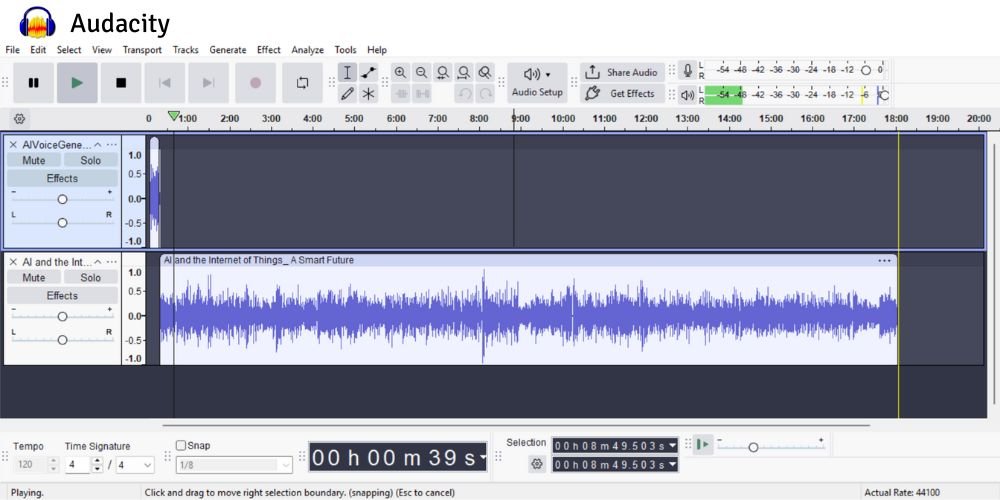
Despite its dated interface, Audacity has earned its position as the world’s most downloaded free audio editor by delivering professional-grade features without the professional price tag—though expect 2-5 hours of manual editing per episode.
Audacity’s Free Advantage
Audacity’s zero-cost model is its primary advantage. One long-term user shared: “Seven years, 300 episodes, zero dollars spent.” For creators starting without budget, this represents unlimited access to professional-grade editing capabilities—download Audacity here to get started with professional audio editing at zero cost.
On top of this, users who invest the time to master Audacity discover a surprisingly comprehensive feature set. Regular users highlight its “useful functions” and effective noise reduction capabilities, while advanced editors appreciate the granular control it offers for detailed audio manipulation.
Audacity’s Dreaded Learning Curve
Interface challenges dominate user complaints about Audacity. The platform consistently draws criticism for its “dated user interface” and the blunt reality that even basic competency requires YouTube tutorials. New users frequently experience “interface shock” that leads to early abandonment. In fact, our research shows that 24% (roughly 1 out of 4) of beginners quit before completing their third episode.
One devastating report illustrates the risk: “After 6 hours of editing an episode for my podcast, the files corrupted. I was devastated and so stressed out and frustrated I laid on my floor and cried.”
Audacity Performance and Limitations
Users consistently report that Audacity’s mixing capabilities fall short of professional alternatives, while technical issues add frustration to the editing process. Some users experience crashes that can destroy hours of work, with reports of “certain bugs that caused the software to crash” appearing regularly in reviews.
Perhaps most stressful for newcomers is Audacity’s destructive editing model—unlike modern editors that preserve your original audio, mistakes in Audacity can’t be easily undone, forcing users to start over or live with imperfect results.
Audacity User Verdict
Audacity proves ideal for technically inclined creators who genuinely enjoy mastering complex tools and can dedicate 2-5 hours per episode to manual editing. If you’re willing to invest the learning time for complete creative control, you can download Audacity from the official site here.
In a nutshell, Audacity delivers professional-quality results at zero cost, but only for creators willing to trade time and simplicity for money.
Alitu: The Beginner’s Best Friend
Best For: First-time podcasters who prioritize ease of use over advanced control
Alitu has built a unique reputation by focusing exclusively on simplicity and automation, earning the highest beginner-friendly scores in our analysis.
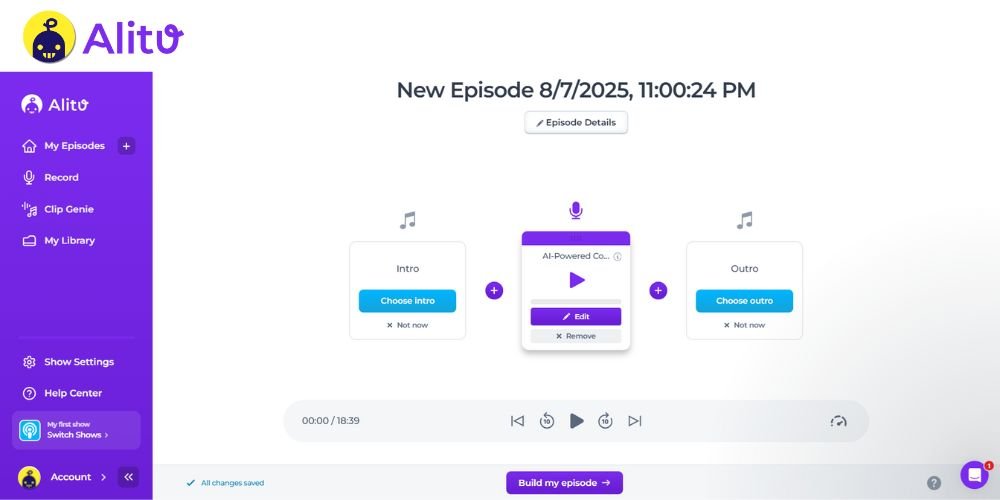
Simplicity That Works
Within hours of signing up, users are publishing episodes that sound professionally produced—no audio engineering degree required. The platform’s drag-and-drop Episode Builder lets creators simply upload their raw recording, add intro and outro music, and arrange segments visually, with Alitu handling all the technical complexity behind the scenes.
One user captured this accessibility perfectly: “At 67, with zero tech skills, Alitu saved our podcasting lives!” This sentiment echoes throughout user reviews, where complete beginners consistently report publishing their first episode on the first day—see how Alitu’s beginner-friendly approach could work for your podcast.
The automated processing tackles the technical hurdles that typically derail new podcasters: balancing audio levels across different microphones, removing background hums and echo, standardizing volume for streaming platforms, and exporting in multiple formats. Users simply focus on their content, while Alitu handles what one reviewer called “all the scary technical stuff I didn’t want to learn.”
Customer Support Excellence
When beginners hit roadblocks, Alitu’s personal, human-centered customer service becomes a lifeline. Users consistently highlight “the amazing knowledge of the support staff and the superb customer service”—a notable contrast in an industry where automated chatbots dominate first-contact support.
One reviewer’s “beyond five stars” rating reflects what multiple long-term users emphasize: the support team doesn’t just respond quickly, they actually solve problems with technical knowledge that matches their responsiveness. This support quality particularly matters for beginners who may need guidance and technical support as they develop their podcasting skills.
Alitu’s Trade-Off: Simplicity vs. Control
Alitu’s automation-first approach creates an inevitable trade-off that becomes apparent as users grow more experienced. Advanced creators who want granular control over their audio find the platform’s streamlined interface frustrating rather than freeing.
Power users specifically cite missing features like detailed equalizer controls, manual noise gate adjustments, and precise audio level manipulation. As one reviewer said: “I miss granular EQ” and others report feeling “constrained by the simplified interface” once they develop more sophisticated audio editing needs.
Alitu User Verdict
At $38/month, Alitu sits firmly in the premium tier of podcasting tools, but users consistently justify the investment based on their priorities. As one reviewer said: “For those without a ton of technical skills, in my opinion, Alitu is definitely worth the investment.” If you’re weighing the time-versus-money trade-off, you can explore Alitu’s automation features here to see if the premium investment makes sense for your situation.
Alitu is a perfect match for complete beginners and busy creators who value time over customization. Users specifically recommend it for solo shows and straightforward formats, acknowledging it’s “not the cheapest option out there” but emphasizing that those who prioritize convenience over cost find genuine value.
GarageBand: The Mac User’s Free Studio
Best For: Mac-owning creators who want professional features without cost
GarageBand leverages Apple’s ecosystem integration to provide sophisticated audio editing capabilities at no cost to Mac users.
GarageBand Native Integration Benefits
Intuitive Mac Experience: GarageBand feels like a natural extension of macOS, earning praise as “the most user friendly I have ever been able to use” among hundreds of App Store applications, according to one reviewer.
Professional Sound Library: The comprehensive instrument collection earns consistent user praise for its “wide variety of virtual instruments and sounds” that transform GarageBand into “a versatile tool for music creation.” This is particularly valuable to creators who want to add original music to their podcasts—get GarageBand free from the Mac App Store if you’re interested in exploring these music creation capabilities.
Beginner-Friendly Interface: GarageBand’s accessibility works well for beginners, with users describing the learning process as straightforward once you invest initial time. The platform rewards exploration, with users discovering “new tricks and settings that aid or streamline the music writing process”.
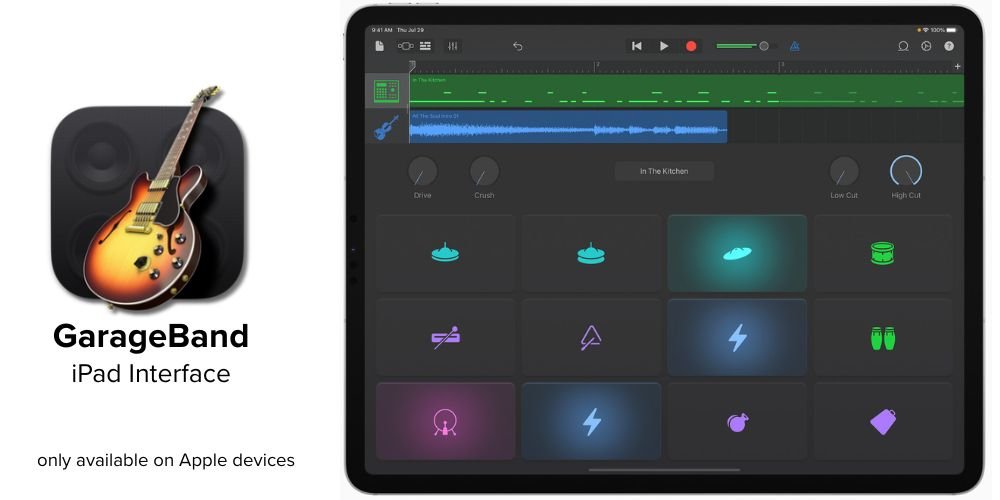
Platform and Performance Limitations
Platform Restrictions: The Mac-only availability limits GarageBand’s user base while creating high expectations that aren’t always met. Battery consumption becomes a major concern during intensive sessions, with users noting that “battery drains like water” during extended recording.
Performance Limitations: Serious creators will encounter limitations as they advance. Users report that GarageBand “lacks ability to create super professional audio,” while the absence of remote recording capabilities means it works best for solo podcasts rather than interviews with distant guests.
Software Stability: Updates can introduce unexpected issues, with users reporting that “occasional software updates can introduce bugs that affect performance”.
GarageBand User Verdict
GarageBand delivers exceptional value for Mac users creating music-heavy or solo podcasts without recurring software expenses. The platform excels when you’re working within Apple’s ecosystem and don’t need remote recording functionality. If you’re a Mac user, you can download GarageBand here.
Zencastr: The Local Recording Alternative With Some Reliability Issues
Best For: Podcasters seeking local recording capabilities who can tolerate occasional technical issues and prefer shorter episode formats.
Zencastr positions itself as a middle-ground solution between complex professional tools and overly simplified beginner platforms, offering solid features when it works reliably.
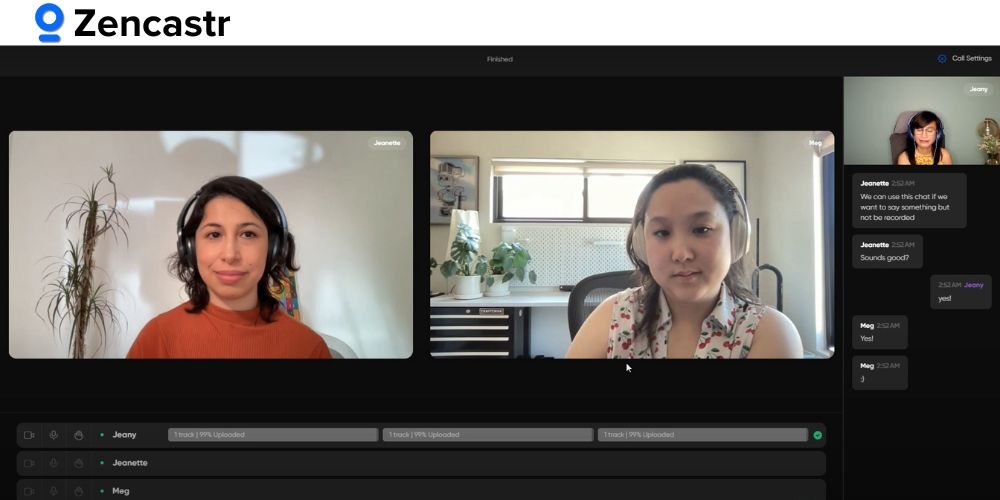
Zencastr Quality and Performance
When functioning properly, the platform delivers good-quality audio through its local recording functionality. Users appreciate the separate track recording and automatic cloud backup integration.
Beyond audio quality, most users find the interface clear and “very user-friendly.” The onboarding process helps new users understand the workflow without overwhelming them with options.
Connection and Sync Problems
However, reliability issues surface frequently in user feedback. Users report that “connections are often lost, leaving the host and guests frustrated” and warn about “audio drift” when guests multitask during recording. Sync problems become particularly problematic for longer episodes, with some hosts reporting “sync loss after 90 minutes.” This limitation significantly impacts creators producing longer-form content.
Interface Confusion
Navigation complexity frustrates some users, with one verified reviewer noting: “The interface is clumsy and requires a lot of clicking around to do simple things.” Even experienced users report confusion about basic platform organization.
Customer Support Concerns
Support response times and customer service quality are ongoing weak points that Zencastr has not yet resolved, with users reporting delays when technical issues require assistance. One verified user shared: “Support is AWFUL. You cannot speak to a person, so if an issue comes up you have to wait for a written response. This takes many hours. By that time you are doing something else, so it can take days to resolve.”
Zencastr User Verdict
Zencastr works best for shorter interview shows where hosts can manage technical issues and don’t need extensive editing features. Users recommend it for conversational formats, but advise against relying on it for critical productions where technical failures aren’t acceptable.
Given the reliability and customer support concerns, thoroughly test Zencastr’s performance in your specific setup before committing to important recordings. (You can check their website here).
Podcastle: Web-Based Podcast Creation with Mixed Reviews
Best For: Mobile creators who need flexibility for recording anywhere.
Podcastle eliminates software installation requirements by operating entirely through web browsers and mobile apps.
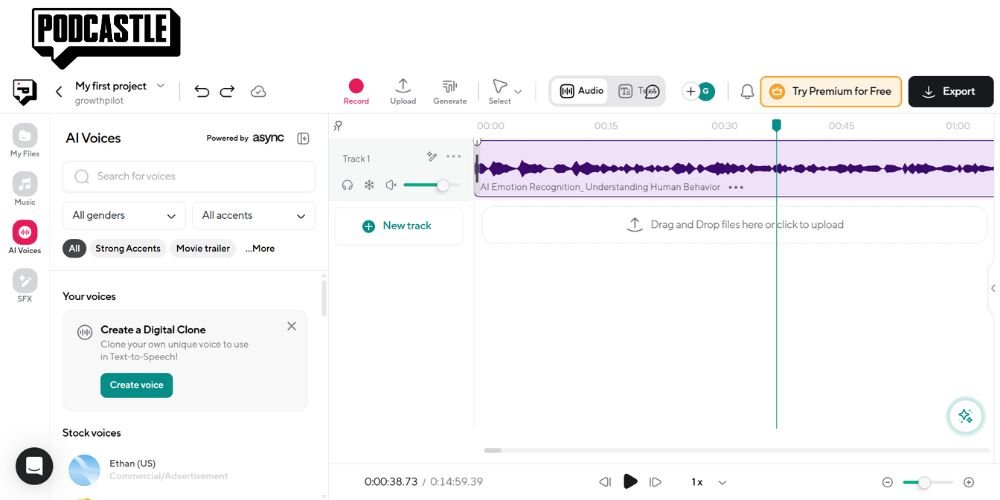
Podcastle Accessibility and Convenience
Its user-friendly design receives praise from some users, with supporters noting it’s “designed for non-techies” and appreciating the mobile app capabilities for quick interviews. The browser-based approach can eliminate compatibility issues across different operating systems, though this convenience depends on stable internet connectivity.”
Customer service experiences vary significantly among users. While some praise “fast and friendly (and HUMAN) response” for technical issues, others report frustrating experiences with billing disputes, including difficulty obtaining refunds and unresponsive support.
Integrated workflow appeals to beginners seeking an all-in-one solution. When working properly, users can record, edit with basic tools, and auto-distribute podcasts within the same platform. However, technical reliability issues may disrupt this workflow, with some users reporting lost recordings and export problems that require starting over.
Technical Issues and Billing Concerns
However, Podcastle won’t work without a good internet connection, which creates significant limitations. Users report the platform becomes “glitchy when Wi-Fi drops” and the 8-hour video cap on lower tiers restricts longer podcasts. More concerning are reports of audio tracks randomly disappearing during editing and export corruption issues that can result in lost work.
Billing practices have generated strong negative reactions from some users, with complaints about difficult cancellation processes and unexpected charges. One frustrated user warned: “Be very careful with their ‘free trial.’ I signed up expecting to try the platform, but was immediately charged $144 USD for an annual plan – without warning.”
A way around unexpected charges is to set reminders 2 or 3 days before the end of the free trial period, giving yourself time to decide whether to continue or cancel before being charged for the whole year.
Podcastle User Verdict
Podcastle may work for casual creators seeking browser-based convenience, but comes with notable risks. While some users appreciate the beginner-friendly interface and integrated workflow, others report serious issues including disappearing audio tracks, billing disputes, and inconsistent customer service.
Consider alternatives like Riverside or Descript for professional use, or proceed with Podcastle only if you’re comfortable with potential technical issues and can carefully navigate the billing process.
The Reality of Podcast Tool Selection: What 800+ User Reviews Actually Reveal
Our analysis of 800+ user reviews across 12 review platforms reveals a significant gap between marketing claims and user experiences across all podcast creation tools. Each tool excels in specific scenarios while falling short in others, making the “best” choice entirely dependent on matching specific creator needs rather than chasing universal top-rated solutions.
Common Pain Points Across Platforms
- Performance issues affect nearly every platform, from Descript’s slowdowns on old devices to Zencastr’s connection problems and Riverside’s long upload times. Users consistently report that real-world performance doesn’t always match promotional materials.
- Support quality varies dramatically, with Alitu earning praise for human responses while other platforms frustrate users with automated or dismissive replies.
- Pricing surprises appear across multiple platforms, from Adobe’s free tier limitations to Riverside’s over-quota fees and Podcastle’s difficult cancellation processes.
What Determines Success in Podcasting
Our analysis revealed that successful podcasters consistently follow four key principles that matter more than having expensive equipment or the best podcast recording and editing software:
- They maintain consistent publishing schedules regardless of platform limitations
- They focus on content quality over perfect audio processing
- They choose tools that match their technical comfort level rather than chasing features they don’t need
- They develop backup plans for technical failures
The Hidden Cost of Tool Selection: Time Investment
The biggest overlooked expense isn’t subscription fees—it’s time. Our analysis shows that even beginner-friendly tools like Alitu require 2-3 hours of initial setup, while complex solutions like Audacity demand 15+ hours of tutorial watching before basic proficiency. Switching platform later costs an additional 20+ hours for content migration and workflow rebuilding, often exceeding a year’s worth of subscription fees in lost productivity.
How to Choose the Best Podcasting Software: Step-by-Step Guide
Through our extensive research of user feedback and community discussions, successful tool selection follows a predictable three-step pattern: identify your primary content type and resources, assess your current skill level, and finally match your needs with market-leading tool features.
Once you’ve selected your software, our comprehensive podcast equipment guide shows you exactly what gear to buy for professional results under $200.
For Complete Beginners (First 10 Episodes)
- Choose Alitu ($38/month) if budget allows it and you prioritize simplicity over advanced features. Users consistently report publishing their first episode within hours rather than days, so you would be trading money for time.
- Choose Audacity (free) if budget is very tight and you’re willing to invest quite a bit of time learning—though extensive free tutorials and guides make this learning curve more manageable than it once was. While initially challenging, you’ll gain valuable skills for professional audio work and almost complete editing control.
- Consider your editing preferences carefully: Descript offers beginner-friendly text-based editing that some find intuitive from day one, while Riverside and similar platforms are better saved until you’ve established your workflow. These tools’ advanced features become most valuable after you understand your specific needs (typically after 5-10 episodes or 2-3 months of consistent publishing).
For Interview/Remote Content
- Choose Riverside if best audio quality matters most to you and you have reliable internet, though expect extra costs if you record a lot.
- Choose Zencastr if you prioritize local recording capabilities and can tolerate occasional technical issues without the help of customer support, particularly for shorter episodes under 60 minutes.
- Avoid browser-based tools like Podcastle if your internet connection is unreliable or you use different browsers (Podcastle only works well consistently in Chrome on desktop).
For Solo/Narrative Content
- Choose Descript if you repurpose content across multiple platforms and value text-based editing.
- Choose GarageBand if you’re on Mac and want to incorporate original music.
- Choose Adobe Podcast if you frequently record in suboptimal environments and need AI cleanup.
For Professional/Advanced Users
- Choose Audacity if you want maximum control and don’t mind a steeper learning curve.
- Choose Descript for complex post-production workflows involving both audio and video.
- Avoid overly simplified platforms like Alitu if you want full technical control.
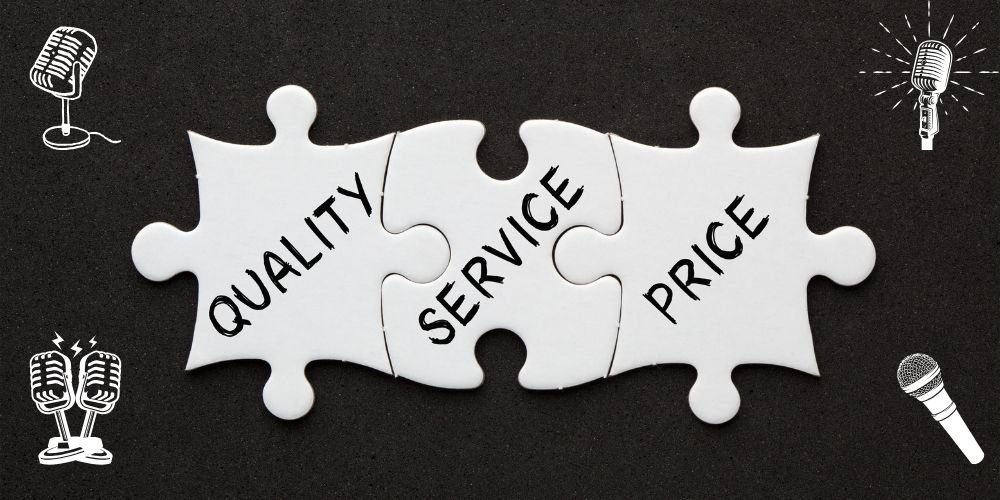
Podcasting Software Costs: Real Pricing Breakdown for 2025
Free Podcasting Tools: The Real Time Investment
Popular free podcasting tools like Audacity and GarageBand require significantly more hands-on editing compared to AI-powered alternatives. Manual editing typically takes 2-3 times the episode length, with complex productions requiring even more time depending on content type and quality standards.
In contrast, platforms with automated features like Alitu can reduce editing time by up to 80% through automated features like silence removal, filler word detection, and text-based editing workflows.
The time difference creates real opportunity costs for serious podcasters, saving 2-3 hours per episode which can represent $100-300 in lost productivity for creators who value their time at professional rates.
Mid-Tier Recording and Editing Tools: The Value Sweet Spot
Platforms in the $20-40/month range—including Alitu, Riverside and Descript—represent the optimal balance for most podcasters. This pricing tier delivers essential automation features like AI transcription, automated editing, and streamlined publishing workflows without the complexity and cost of enterprise-level tools.
Top Premium tiers often include advanced team collaboration features, enterprise-level analytics, and multi-show network management tools that solo creators and small podcast teams rarely need.
Equipment vs. Software Expenses
While software costs range from free to $40/month, your initial equipment investment typically runs from $150-200 for professional quality. Our detailed podcast equipment breakdown shows exactly how to spend your money in a smart way to afford a microphone, headphones, and necessary accessories with a humble budget.
Conclusion: Choose Your Tool, Master Your Craft
After analyzing hundreds and hundreds of real user experiences with podcasting recording and editing software, one truth emerges: no single tool provides a perfect solution for every creator. Each platform excels in specific scenarios while struggling in others, making tool selection less about finding the “best” option and more about matching your specific needs, technical comfort level, and content format.
The most successful podcasters in our analysis share a common approach: they choose tools that align with their current needs rather than their aspirational goals, then focus on consistent content creation and audience building.
Ready to find your perfect podcasting tool? Our free podcast software finder takes the guesswork out of tool selection with personalized recommendations based on your specific needs and experience level.
Remember that the best podcasting tool is the one you’ll actually use consistently. Choose based on your current needs, prepare for technical challenges, and focus on creating valuable content for your audience. The rest—including inevitable tool upgrades and workflow refinements—will follow naturally as your show and skills develop.

